On August 20, the entire Internet was ignited by Black Myth: Wukong. This enthusiasm was like a raging fire, sweeping every corner and driving countless players crazy. This enthusiasm is not only an expectation for the game itself, but also a love for Chinese culture and a reinterpretation of traditional stories.
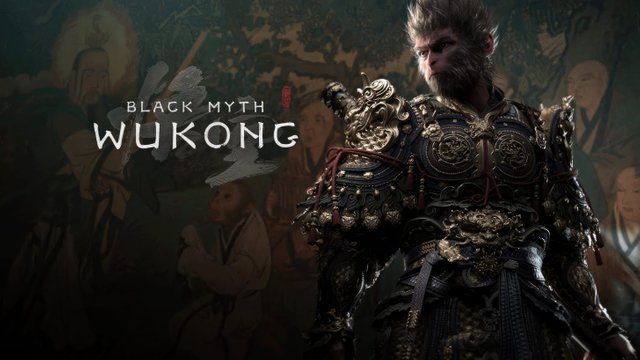
Dear "Tianming people", now is the time to turn this enthusiasm into action. Shanxi, a place with a long history and splendid culture, invites "Tianming people" from all over the world . Here, you can follow the carefully designed tourist routes to deeply experience the natural scenery and cultural history of Shanxi.
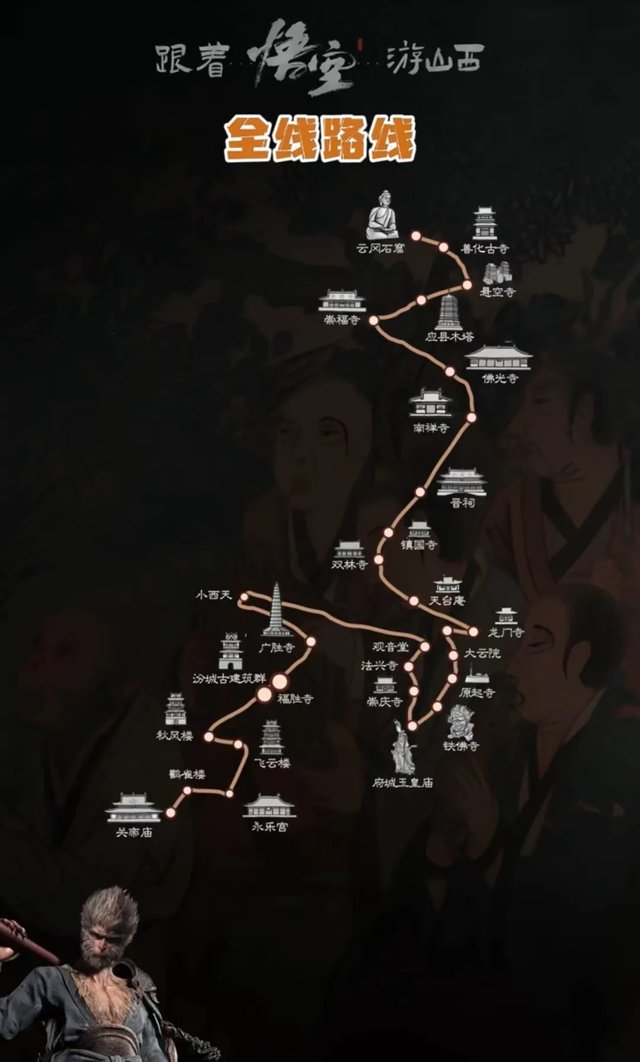
For those places that "appeared" in "Black Myth: Wukong", Xiaoxitian, Yuhuang Temple, Chongfu Temple, Foguang Temple, etc., everyone is welcome to have an immersive experience . Here, you can not only witness the magnificence of these ancient monuments, but also feel the stories and history behind them.
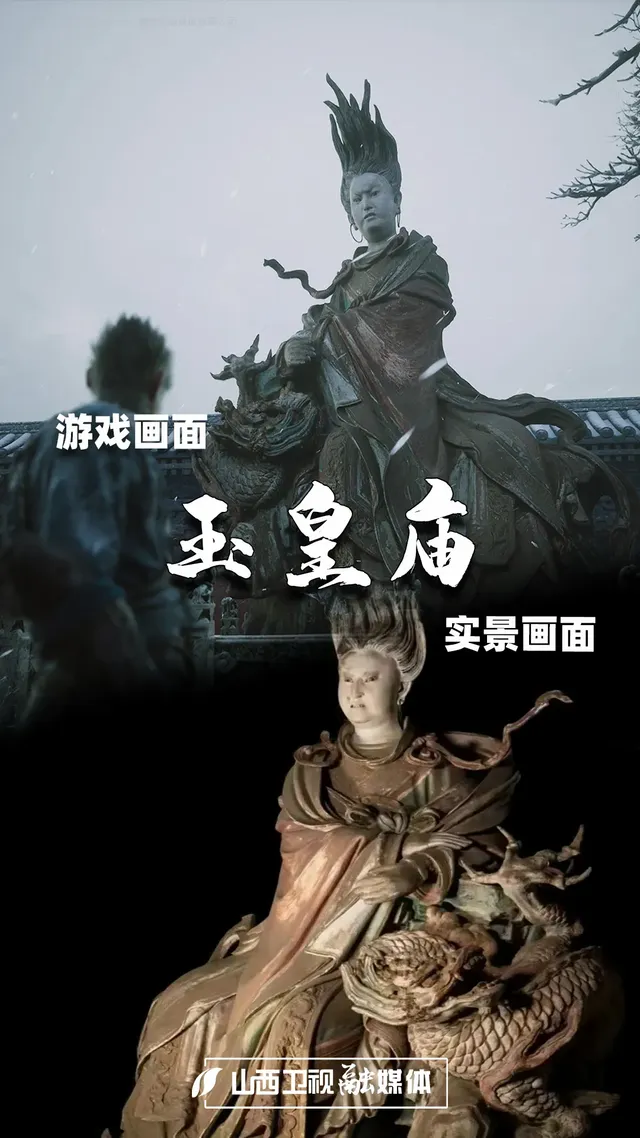
In addition, there are offline pass documents, pass token cards (postcards), offline device check-ins, themed peripherals ... and more exciting things are waiting for everyone to unlock.
Now, let's follow the footsteps of Black Myth: Wukong and explore the "legends" that belong only to Shanxi! In this journey, you are not only a "player", but also an "explorer" and a "man of destiny", looking for your own "legend" in the mountains and rivers of Shanxi.
⚠️Attention~ Don’t miss these attractions!
Iron Buddha Temple (currently closed due to cultural relic protection, specific opening time to be notified by the official later)
Guanyin Hall (currently closed due to digital scanning, specific opening time to be notified by the official later)
Fencheng Ancient Buildings Complex (due to insufficient cultural protection, it is not open to the public. The specific opening time will be notified by the official later)
Fusheng Temple (currently closed due to maintenance, specific opening time to be notified by the official later)
Please understand that the above attractions are temporarily closed. You can visit them after they are reopened later.
Is "Black Myth: Wukong" destined to meet Shanxi?
--- 01---
For lovers of visiting ancient sites, in addition to the charm of the game itself, the most exciting thing is the "immersive" feeling of Easter eggs:
The quaint and exquisite pictures in those games, whether they are interactive colored sculptures or buildings flashing by in the background, are all wonders of civilization that we have witnessed and even touched.
The tall and magnificent building shrouded in mist that you occasionally encounter in the game is the Yingxian Wooden Pagoda . This wooden pagoda is the tallest and oldest existing wooden tower building in China, and it is also the only wooden pavilion-style tower.
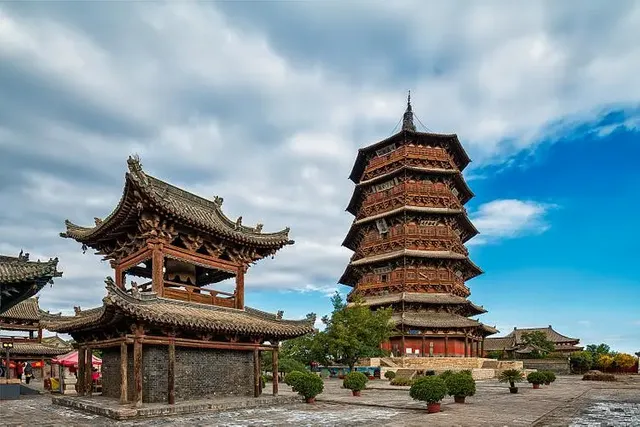
Image source: Shanxi Cultural Tourism Media Center
After the fierce battle with the white dragon, the figure of Guanyin Pavilion of Dule Temple appeared looming. This is a building that inherits the legacy of the Tang Dynasty and the construction style of the Song Dynasty. It was praised by Liang Sicheng as the "supreme national treasure" .
Walking on the small road in the game, the "little gods" that the "destiny man" met seemed to be the twenty-eight constellations of the Yuan Dynasty that came from the Jade Emperor Temple in the prefecture city. Each one was lifelike! It made people feel as if they had traveled to the real Shanxi.
In addition to the "little gods" here, there are also the magnificent Xiaoxitian in Xi County , the royal Yungang Grottoes , the ancient Foguang Temple and Shuozhou Chongfu Temple , the unique Hanging Temple in Datong ... These dazzling wonders have made Shanxi, a low-key cultural province since ancient times, completely stand out.
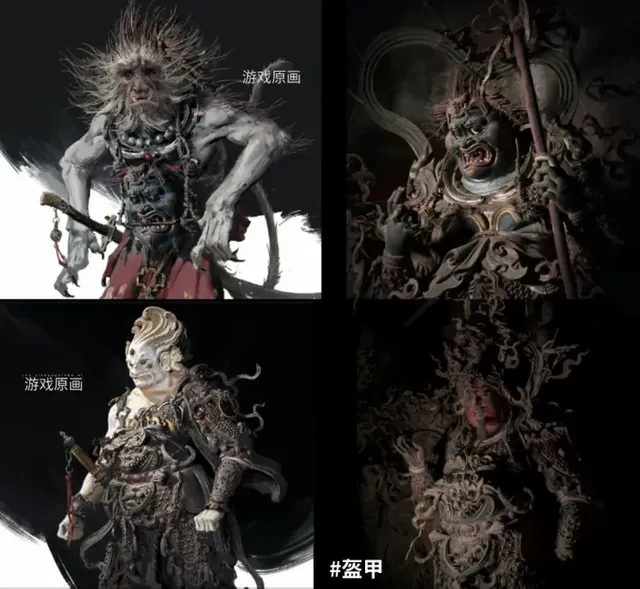
Image source: Shanxi Cloud Media
Many netizens said: Shanxi can be regarded as taking advantage of the "Black Myth: Wukong" this time. In fact, it is more accurate to say that the game and Shanxi are connected, more like a destined encounter . It is not that "Black Myth: Wukong" chose Shanxi, but that Shanxi's profound cultural heritage and rich historical heritage make this game "irresistible".

Shanxi's ancient buildings and painted sculptures are not only treasures of Chinese traditional culture, but also an important part of the world's cultural heritage. In this regard, Shanxi is undoubtedly the best choice for "Black Myth: Wukong" . Because the ancient buildings alone are brilliant enough:
There are so many ancient buildings here! According to the third national cultural relics survey, there are 53,875 immovable cultural relics in Shanxi, including 28,027 ancient buildings. Among these ancient buildings, wooden structures before the Song, Liao and Jin dynasties account for about 75% of the country; wooden structures from the Yuan Dynasty account for about 80% of the country; the only four remaining Tang Dynasty wooden structures in China are all located in Shanxi! It can be called the "Treasure House of Chinese Ancient Architecture" .
Starting from the Nanchan Temple built in the third year of the Jianzhong Period of the Tang Dynasty (782), there is an ancient building in Shanxi almost every fifty years. They link together the development process of ancient Chinese architecture and can be regarded as living teaching materials for studying the evolution of ancient Chinese architecture . These ancient buildings are not only witnesses of history, but also shelter those equally precious murals and colored sculptures, allowing those fireworks and humanities that have been ignored by history books to reappear in glory today.
Because of Black Myth: Wukong, Shanxi is no longer unknown. In its own way, it shows the world the profound heritage of Chinese culture. Here, every click and every exploration is a dialogue with history and a touch of the soul.
So the question is, there are so many ancient buildings in Shanxi, but you don’t know where to start when you come to Shanxi? Don’t worry, the editor will take you to explore it, let you become an "ancient building expert" in seconds, and appreciate the unique charm of Shanxi's ancient buildings!
In Shanxi, you just need to "look up"
---- 02----
Stepping into Shanxi is like walking into living history. Every ancient building here is a witness to time, and at the same time tells a thousand-year story in its own way. Years have left traces in the bricks and stones of these buildings, making them appear more solemn and mysterious.
In Shanxi, you don't need to look for traces of history deliberately, because they are everywhere. Whether it is a magnificent temple, an exquisite courtyard, a quaint village, or a weathered city wall, each one carries rich historical information and cultural value.
To truly appreciate the charm of these ancient buildings, all you need to do is look up!
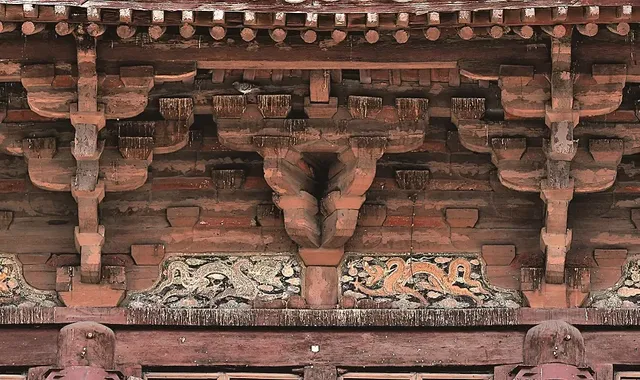
【 Dougong 】
Dougong is a unique structure in ancient Chinese architecture. It is located at the top of the column, between the lintel and the eaves purlin , or between the frames. With its exquisite design and well-defined layout, it looks like a puzzle in the sky, showing a staggered beauty.
Dougong is not only a key part of the building structure, but also a perfect combination of craftsmanship and art. When you look up at the Dougong, you can feel the wisdom and ingenuity of the ancient craftsmen, as if you can travel through time and space and see their carefully carved figures.
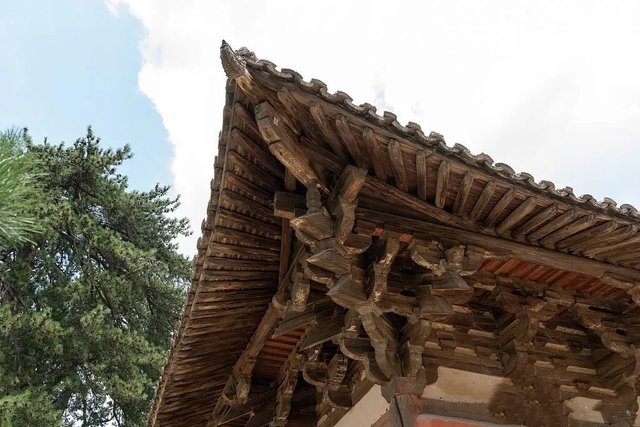
The brackets of the Yingxian Wooden Pagoda are made of elm wood, with a wood consumption of tens of thousands of cubic meters. There are 59 different forms and hundreds of brackets throughout the tower, which are like blooming lotus flowers decorating the tower body. The variety of brackets is rare in China, so the Yingxian Wooden Pagoda is known as the "Bracket Museum". (Photo source: Wenbo Circle)
The dougong of the East Hall of Foguang Temple has been measured to have a cross-sectional size of 210×300 cm, which is ten times larger than the cross-sectional size of dougong in the late Qing Dynasty. The famous architect Liang Sicheng also commented: The eaves of the hall extend far and wide, and the dougong is majestic and wide, which is a typical ancient building of the Tang Dynasty.
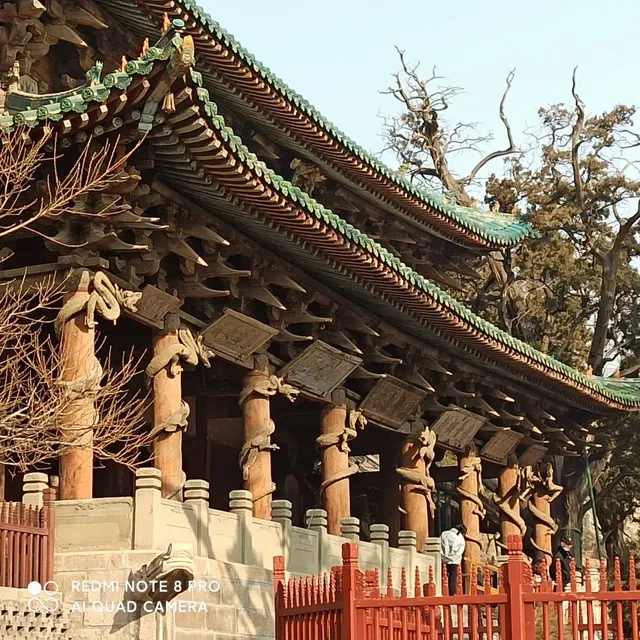
The dougong of the Holy Mother Hall of Jin Temple has various shapes, with different shapes and craftsmanship for the capitals and interspaces, and for the upper and lower eaves. The dougong under the eaves of the main hall fully demonstrates the decorative function of dougong. The whole hall is magnificent and solemn, showing the wisdom and innovation of ancient craftsmen. (Photo source: Ancient Architecture Dougong School)
【Plaque】
Plaques play an indispensable role in ancient Chinese architecture. They are usually hung on door lintels or screens . They are not only used as decorations, but also carry the name, nature, and deep cultural and emotional implications of the building. Each plaque is a microcosm of history, telling a unique story.
They are like the eyes of ancient buildings. Through them, we can get a glimpse of the thoughts and emotions of the ancients and have a spiritual dialogue across time and space. When you look up and gaze at these plaques, it is as if you have a spiritual exchange with the ancients and feel their breath of life and the spirit of the times.
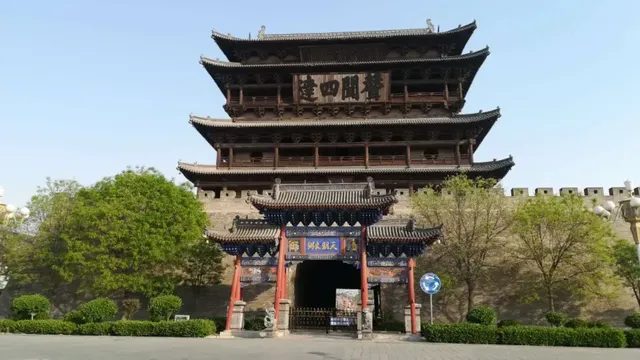
Dai County Border Tower is known as the "No. 1 Tower of the Great Wall". There are two huge plaques hanging on the north and south sides of the building. The one on the south side is "The Voice Reaches All Around", and the one on the north side is "The Power Shocks the Three Passes". Both are 10 meters long and 3 meters wide. They are magnificent and antique, and are both "the largest plaques in Asia". (Photo source: Shanxi Cloud Media)
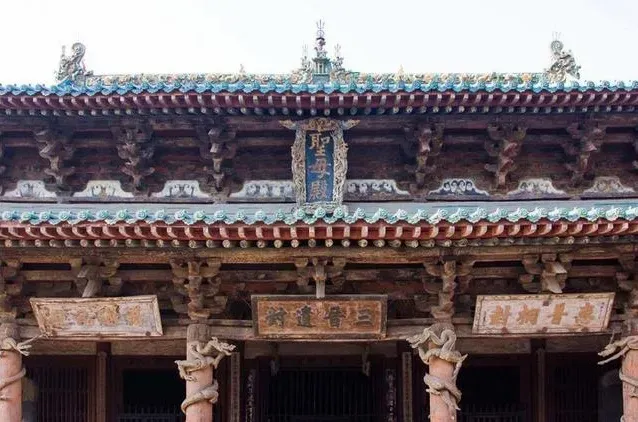
There are a total of 162 plaques in all the buildings of the Jin Temple Museum, among which the Holy Mother Hall is the place with the most couplets and plaques. Most of the content is praising the blessings brought to people by the "Fengtong" Shanxi. Each one is a masterpiece with clear and profound intentions, and extremely refined writing and carving techniques. (Photo source: Shanxi Cultural Tourism Media Center)
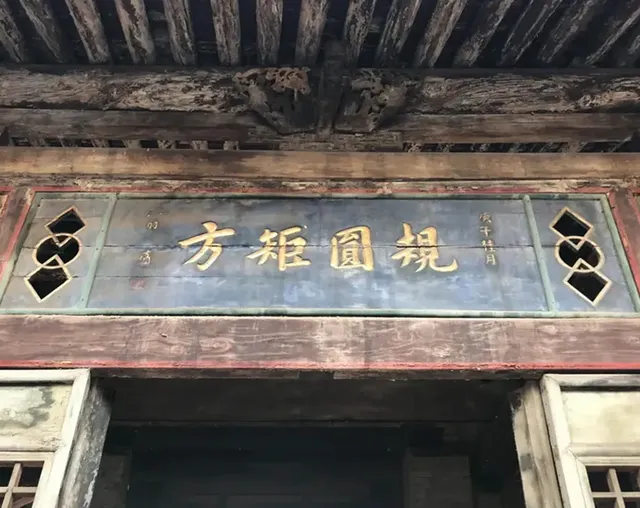
Wang Family Courtyard is known as the No. 1 residential building in China. There is a plaque with the words "规圆规方" at the Red Gate Fort. What is peculiar is that there is an extra dot on the "规". This is not a typo, but a deliberate addition, which is intended to require the descendants of the Wang family to be authentic and have more rules. (Photo source: Shanxi Cultural Tourism Media Center)
【Algae well】
Ceilings in ancient buildings serve both as a shelter and as a decoration. Those dome-shaped, richly decorated ceilings are called "caissons" . Each decorative area of a caisson is called a "well", and the wells are often covered with exquisite patterns, carvings and paintings, giving the interior of the building a unique artistic charm.
When people walk into an ancient building with a caisson, they often stop and look up unconsciously. Those gorgeous caissons are like stars in the night sky, shining brightly and creating a dreamlike atmosphere. They not only show the ancients' profound understanding of architectural aesthetics, but also reflect their pursuit and expression of beauty.
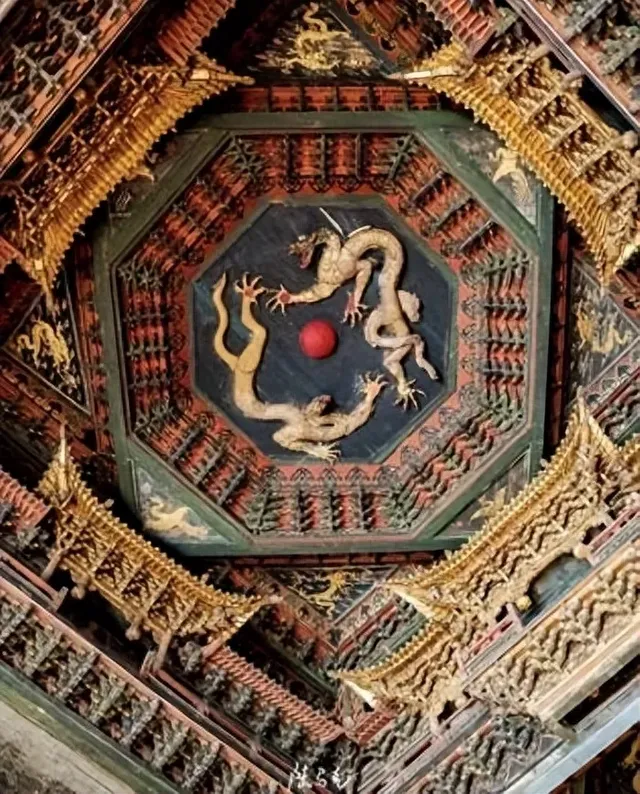
The caisson in the Pure Land Temple is the best in Shanxi. Nine caissons are squeezed into the small space of the Pure Land Temple. The most exquisite one is the Tiangong Pavilion caisson in the center of the main hall. Small wooden eaves with exquisite workmanship extend from the four walls of the caisson. In the center of the caisson supported by small wooden brackets is a wooden sculpture of two dragons playing with a pearl.
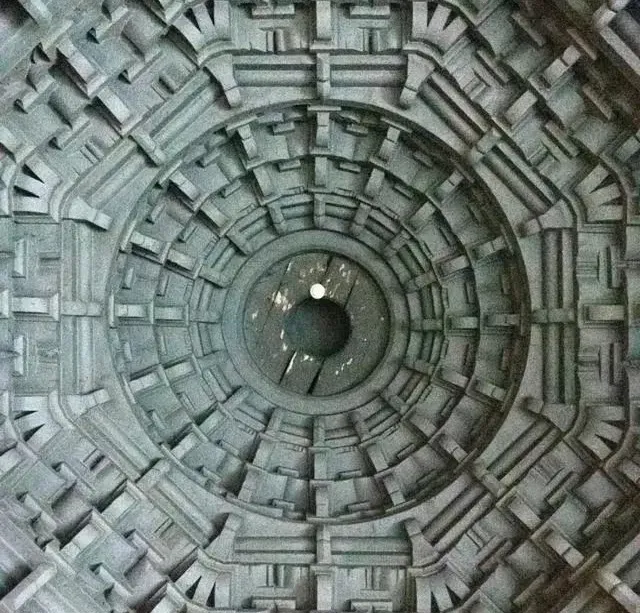
The Sansheng Pavilion above the main hall of Shuangta Temple is a single-eaved, hip-and-gable rooftop pavilion without beams. When you look up from the center of the hall, you will see a caisson made of brick carvings, with brackets protruding and stacked up to form a dome roof that is larger at the bottom and smaller at the top, like a huge umbrella cover. It is gorgeous and exquisite, and is a masterpiece among beamless pavilions.
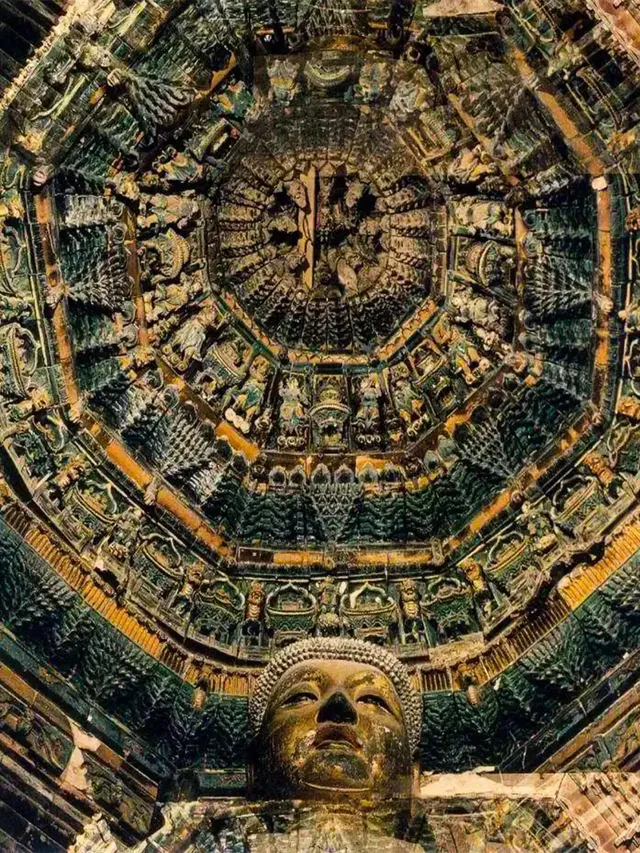
The caisson in Feihong Tower of Guangsheng Temple is the only colored glaze caisson in China. This caisson has several layers, all made of colored glaze. It has exquisite craftsmanship, complex structure, bright and gorgeous colors. It is the most outstanding work of colored glaze art in the Ming Dynasty. (Photo source: Leng Yeyu Qingxi)
【Owl Kiss】
Chiwen, also known as "Chiwei" or "Chiwen beast", is an important element of roof decoration in ancient Chinese architecture, commonly seen on the main ridge and vertical ridge of official buildings . These beasts not only have extremely high artistic value, but also contain rich culture. In ancient times, people believed that they could drive away evil spirits and disasters, and protect the safety of buildings and residents.
The shapes of chiwen vary, but each shape has its own specific symbolic meaning. In official buildings, the size and number of chiwen are often proportional to the level and importance of the palace where they are located. For example, on the roof of the emperor's palace or temple, the number and decoration of chiwen would be more complicated and exquisite to highlight his noble status
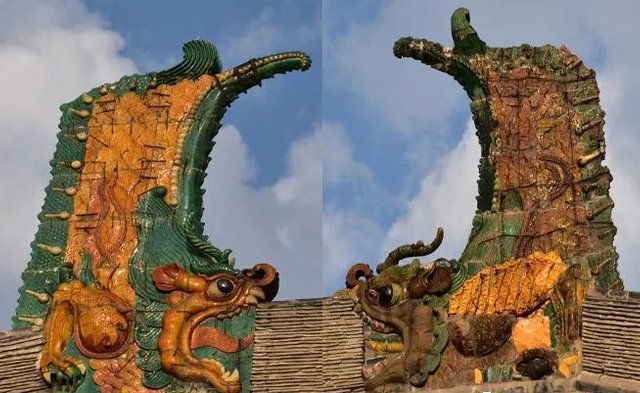
The chiwen on the top of the main hall of Huayan Temple is the original from the Jin Dynasty 900 years ago, composed of 8 glazed components. The two chiwen are 4.5 meters high, 1.1 meters higher than the chiwen of the Hall of Supreme Harmony in the Forbidden City. It is the largest glazed chiwen in China, and it has gone through 900 years of wind and rain and is still dazzling.
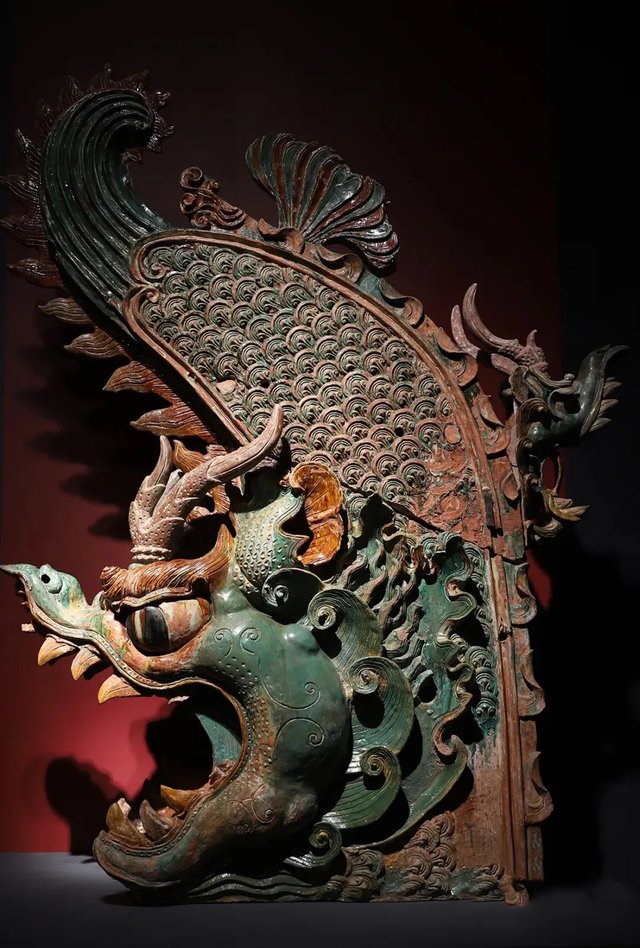
The three-color glazed chiwen, more than 2 meters high, stand at both ends of the main ridge of the Dragon and Tiger Hall of the Yongle Palace. Their shapes are quite different from the chiwen of the Chongyang Hall preserved in the Shanxi Museum. The upper chiwen extends slightly forward, and the outward-curled tail is taller and longer, with a back beast at the back. The overall shape is mighty and it is a fine piece of glazed chiwen from the Yuan Dynasty.
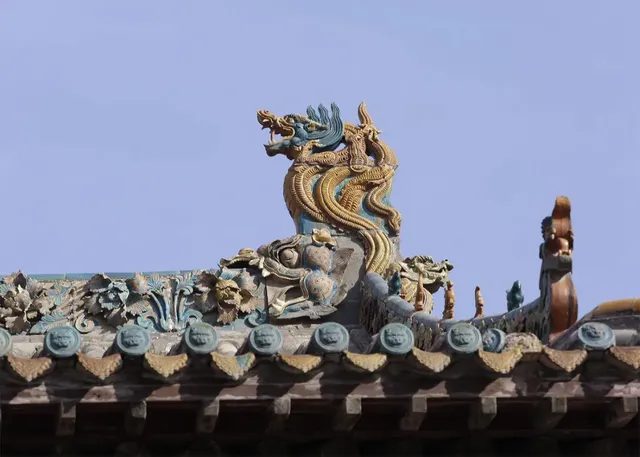
Taitou Temple is located in the urban area of Hejin. It is built on a high platform and can only be seen by looking up, so it is called the Head-raising Temple. The offering hall in the temple is a Qing Dynasty building. The glazed chiwen at both ends of the main ridge are three-dimensionally piled with novel shapes. Except for the lower chiwen head, which still retains the traditional shape of opening its mouth to swallow the ridge, the tail has been completely replaced by a giant dragon standing on the ridge with its head held high and its body bent, reflecting the superb level of Hejin glazed production art in the Qing Dynasty. (Photo source: Yuncheng Cultural Relics)
【Hanging Plastic】
Hanging sculpture is a relatively special kind of colored sculpture art . It is often made in grottoes, temples and monasteries . It displays rich characters, scenes and stories in a three-dimensional form, creating an immersive "Buddhist scene".
Hanging high on the wall or between beams, people need to look up to appreciate the whole picture. Those lifelike colored sculptures, delicate expressions and lively postures seem to be telling ancient legends.
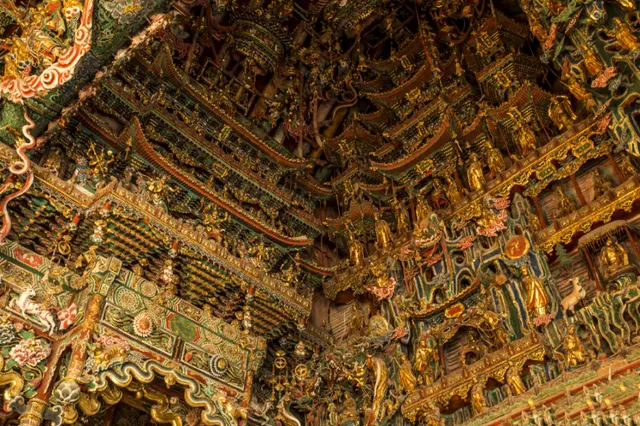
Xixian Xiaoxitian Scenic Area is the "masterpiece" of Chinese hanging sculpture art. More than 4% of Shanxi's colored sculptures from the Ming and Qing dynasties are preserved in this hall with an area of only 169.6 square meters. Some of these colored sculptures are more than 3 meters tall, while others are only the size of a thumb. The hanging Buddha statues of all sizes, whether moving or still, are very exciting.
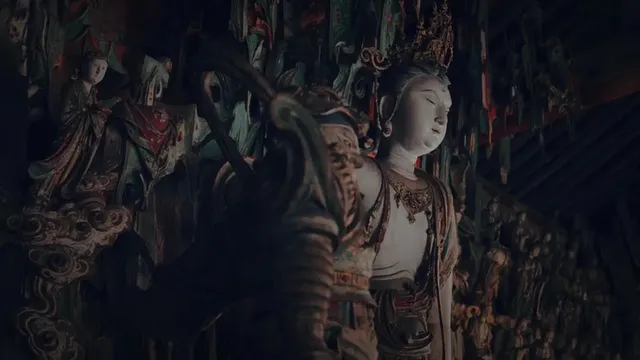
There are 500 colored sculptures in the Thousand Buddha Hall of Shuanglin Temple, accounting for a quarter of the temple. The hall is surrounded by hanging sculptures and wall sculptures, from the ground to the roof, adding a sense of layering to the statues. They echo the main statue of Avalokitesvara from afar, forming a whole, turning the entire Thousand Buddha Hall into an ocean of Buddhist art.
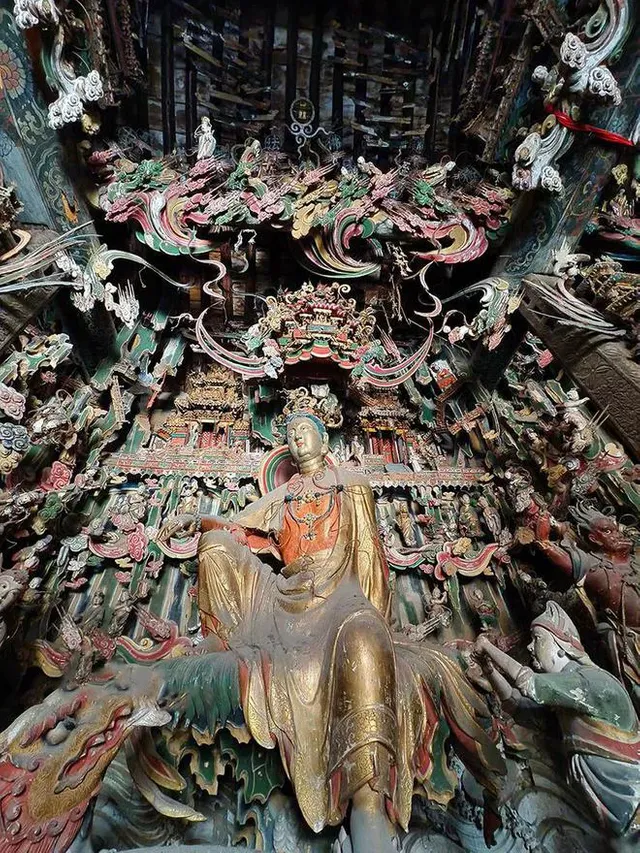
The walls, pillars, beams and frames of the Guanyin Hall are covered with statues of characters from myths and legends. There are nearly a thousand statues of different sizes, each with a different look and lifelike. These statues are connected only by horizontal pillars at the back, suspended in the air on all sides, surrounded by auspicious clouds, giving a sense of heavenly wonderland. (Photo source: Shanxi Channel of People's Daily Online)
Every time we look up, it is a tribute to history and a collision with the wisdom of the ancients. In Shanxi, we always have to raise our heads, because only by raising our heads can we truly appreciate the charm of the ancient buildings on this land and understand the stories and emotions hidden in the years.
Shanxi's ancient buildings are the crystallization of the ancients' wisdom and aesthetic exploration. Under limited conditions, the craftsmen took living space and the pursuit of beauty to the extreme. These buildings still impress us with their aesthetics, and modern architecture and colored sculpture art still draw on the wisdom of ancient buildings and the proportion of human beauty.
Shanxi is not only a witness to history, but also a source of inspiration. Here, we can uncover the illusion of fashion and discover the everlasting beauty. The modern interpretation of traditional culture in Black Myth: Wukong echoes the spiritual world and aesthetic pursuit of ancient Shanxi architecture.